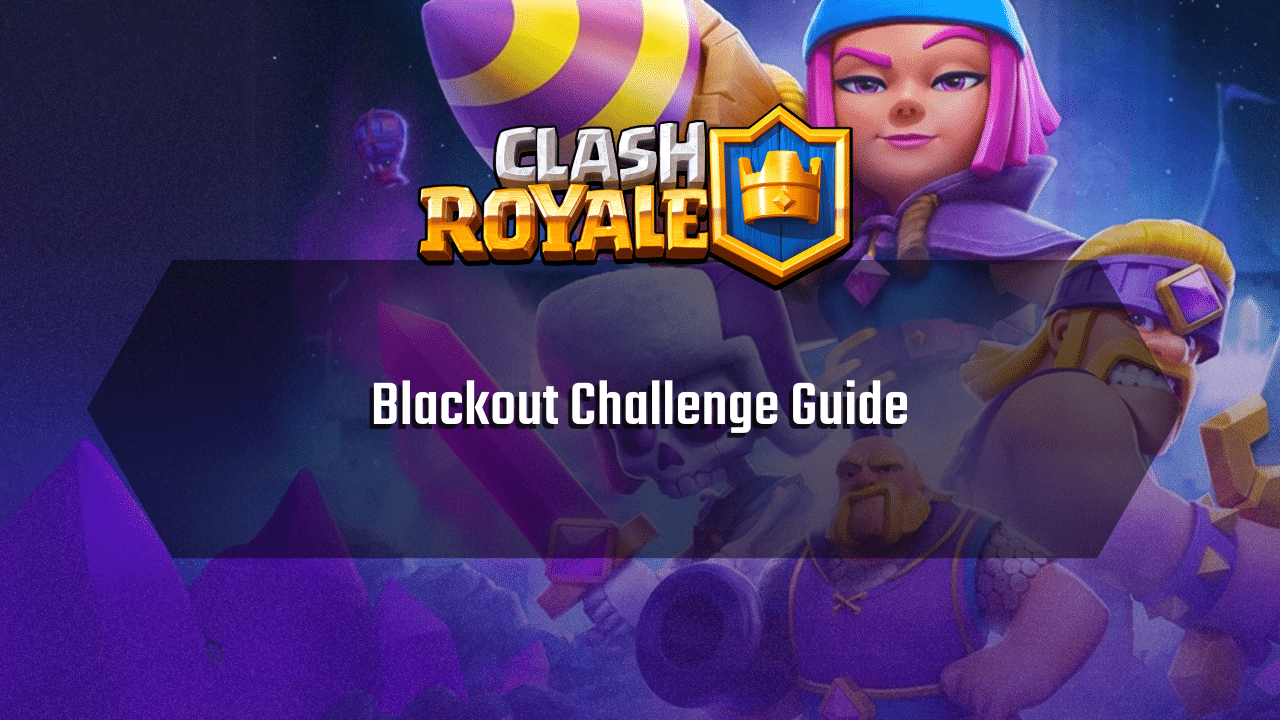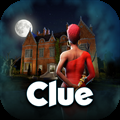
Introduction to the Blackout Challenge
Welcome to the ultimate guide for the Clash Royale Blackout Challenge, a unique and thrilling limited-time event that truly tests your strategic thinking and adaptability! This exciting game mode, featured during the Shocktober 2 Season 64, took place from October 14 to 21, 2024, and introduced a fresh twist to the traditional Clash Royale arena by plunging it into near-total darkness.
In the Blackout Challenge, players faced an arena where visibility was severely limited. Troops were visible only when they were attacked by enemy units or towers, making it difficult to see what was on the battlefield at any given moment. Periodic flashes of thunder illuminated the arena briefly, revealing all deployed units, which became critical moments for planning your next move. In addition, health bars of enemy units would appear when they took damage, providing some vital clues for assessing the state of the battle.
To further intensify the challenge, the Blackout event restricted the use of evolved cards. Players could only use the base versions of their cards, although one Champion card could still be included in their deck. This forced players to focus on fundamental strategies and deck compositions, rather than relying on evolved cards and abilities.
Sound played a pivotal role in this event. With limited visual information, players had to rely heavily on in-game audio cues to determine which units their opponents had deployed. Recognizing the distinctive sounds of various cards and units was crucial to success, as players had to make decisions based on what they heard rather than what they saw. Turning up the volume was an essential strategy for gaining an edge in identifying enemy movements and executing counterattacks effectively.
This guide will explore the most effective strategies, deck recommendations, and tips for navigating the challenges of the Blackout Challenge. Whether you are an experienced player or new to the game mode, understanding its mechanics and developing your sound-based awareness is key to mastering the shadows and securing victory.
General Gameplay Tips and Strategies
In the Clash Royale Blackout Challenge, the key to success lies in adapting to the limited visibility and making the most of the unique mechanics of the event. One of the most crucial strategies is to prioritize sound. With visibility compromised, listening closely to the distinct audio cues of each troop can help you track your opponent’s movements. If you’re familiar with the game’s sound cues, this can give you a substantial advantage, so it is highly recommended to turn up the game volume to fully benefit from these audio signals.
Another essential tip is to remember and track the troops your opponent deploys, even when they’re no longer visible. The brief moments of light that flash across the arena allow you to update your mental map of the battlefield, so you should stay alert to adjust your strategy. Additionally, when enemy troops take damage, their health bars become visible, which can provide important information about their position.
For those participating in the Blackout Challenge, sticking to familiar decks is a smart move. Playing with a deck you are already comfortable with allows you to more effectively manage the limited visibility and maintain control of the game. Familiarity with your deck’s interactions will help you play confidently, even when you can’t fully see what’s going on.
Mind your placement carefully to avoid giving your opponent an easy advantage. The sides of the arena remain visible throughout the challenge, so placing your troops there will make it easier for your opponent to anticipate and counter your moves. Keep your cards closer to the center of the battlefield when possible.
Additionally, observe full health: If your troops are at full health, there will be no visible health bar above them. This can be used to your advantage, as it keeps your opponent guessing about the exact state of your units. On the other hand, spells should be used with caution. It’s often best to avoid using spells during blackouts unless you’re sure it’s a good Elixir trade, as targeting with spells like Rocket or Poison can be difficult without clear visibility. Spells with a wider area of effect, such as Arrows, are more reliable and easier to land in the dark.
Practice is key to mastering this mode, so consider using the Blackout event itself to get accustomed to the gameplay. Familiarizing yourself with the rhythm of the blackouts and the sound cues will help you become more efficient in making decisions. Some players also recommend an aggressive opening to apply early pressure, using fast decks that can rush the river before your opponent can adapt to the limited visibility.
By applying these strategies, you can make the most of the Blackout Challenge’s unique mechanics and improve your chances of victory in this thrilling game mode.
Deck Building Strategies for the Blackout Challenge
When building a deck for the Clash Royale Blackout Challenge, it’s important to prioritize strategies that work well under the unique conditions of limited visibility. First and foremost, stick with a deck you know well. Familiarity with your card interactions and strategies will help you make the best decisions even when you can’t always see what’s happening on the battlefield.
Fast cycle and bait decks can be highly effective in this mode, as they rely on overwhelming your opponent with multiple threats or forcing them to waste spells. Decks like Goblin Drill cycle, Mega Knight Miner Zap bait, and Log bait variations are all good examples, as they create pressure that can be harder to manage when the opponent’s visibility is limited.
Cards that spawn on towers are especially useful in the Blackout Challenge. Troops like Goblin Barrel, Goblin Drill, Miner, and Graveyard can be particularly tricky to defend against in the dark since they appear directly on the tower, making it harder for your opponent to react quickly or deploy counters.
It’s also important to opt for spells with area damage, such as Arrows, which have a wide area of effect. These spells are more forgiving when trying to hit targets in the dark, especially swarms or low-health troops that might be difficult to target with single-target spells.
In terms of win conditions, decks should include cards that can consistently apply pressure to the opponent’s towers. Goblin Drill is particularly powerful, as it’s difficult for opponents to pinpoint its exact location until the Goblins start dealing damage. Skeleton Barrel, Suspicious Bush, and Ram Rider are also effective in this mode because they can quickly reach the tower and exploit the limited visibility.
Balancing offense and defense is crucial for success. While aggressive strategies are important, you also need defensive options in your deck. A well-rounded deck like the “Mighty SkeleBarrel” deck, which combines offense and defense with cards like Royal Recruits and Mighty Miner, can be effective in managing heavy enemy pushes while also keeping up offensive pressure.
When choosing your deck, consider how recognizable your cards’ deployment sounds are. Relying on sound cues is vital in the Blackout Challenge, but if your opponent also has strong sound awareness, they may anticipate your plays based on your card sounds. Big spells like Rocket or Lightning can be riskier in this mode since it’s harder to target precisely in the dark. It’s usually safer to rely on smaller, more forgiving spells, but Lightning could still be effective if used carefully.
Some invisibility cards, such as Archer Queen, can create significant pressure since they’re harder to track in the darkness. Similarly, cards like Cannon Cart that lock onto a tower can be extremely powerful because they continue to deal damage even when the blackout makes them hard to see, potentially catching your opponent off guard.
By keeping these deck-building strategies in mind, you can create a deck that suits the unique challenges of the Blackout Challenge. Experimentation and adapting to the evolving meta will be key to finding the most successful combinations and securing victory in this thrilling event.
Example Decks
When building a deck for the Clash Royale Blackout Challenge, it’s important to focus on strategies that can work effectively under the limited visibility of the event. A deck featuring Prince, Skeleton Barrel, Arrows, Cannon Cart, Mother Witch, Archer Queen, Goblins, and a “suspicious bush” (likely referring to Goblin Gang or Royal Recruits) can be particularly effective. The Cannon Cart is a powerful support unit, dealing consistent damage while also benefiting from its faster hit speed. This deck can perform well due to its versatility, applying pressure with strong troops and support units.
Another good strategy is to use a deck featuring Phoenix, Barbarian Barrel, Electro Giant, and Goblin Barrel. This type of deck is straightforward and highly effective, especially in single elixir. The Goblin Giant offers consistent pressure, making it a reliable win condition in the dark.
For a deck focused on Royal Recruits, combining Archer Queen, Skeleton Barrel, a suspicious bush, and Royal Recruits can be an excellent choice. The deck aims to overwhelm opponents with Royal Recruits, which can be difficult to counter in the darkness. The Archer Queen’s invisibility adds another layer of difficulty for the opponent, and the Cannon Cart becomes especially tricky, continuing to deal damage even when hidden in the blackouts.
If you want to balance offense and defense, a deck featuring Suspicious Bush, Skeleton Barrel, Mighty Miner, Mother Witch, Royal Recruits, Firecracker, Goblin Gang, Arrows, and Tower Princess (Tower Troop) might suit your playstyle. The Mighty Miner provides both offensive pressure and defense, while Goblin Gang and Arrows help manage enemy swarms.
For another strong combination, using Goblinstein, Ram Rider, P.E.K.K.A., Ice Wizard, Arrows, Skeletons, Electro Spirit, Rage Spell, and Tower Princess can be highly effective. The Ram Rider’s speed allows it to exploit the darkness, quickly reaching the tower while the P.E.K.K.A. serves as a reliable tank to deal with enemy threats. The Rage Spell accelerates pushes, and Ice Wizard or Electro Spirit can help control the battlefield.
A Ram Rider and Rage combination can also be useful for quick tower pushes during blackouts, taking advantage of the fast-paced nature of the event. Additionally, using bait cards like Skeleton Barrel and other cheap troops to spam when the screen goes black can be effective in overwhelming your opponent. A Royal Recruits deck can also be highly effective in double elixir, especially when spamming both lanes.
Lastly, quick cycle decks or bait decks like Miner Wall Breakers, Goblin Drill, and Log Bait can create constant pressure and capitalize on the limited visibility. These decks can overwhelm your opponent, keeping them guessing about your next move while you control the tempo of the game.
Across these decks, the key is to apply pressure quickly, utilize cards that spawn directly on towers, and use area damage spells. Cards like Cannon Cart, Archer Queen, Skeleton Barrel, Suspicious Bush, Goblin Drill, and Royal Recruits are powerful tools to take advantage of the limited visibility and create opportunities for significant damage.
Conclusion
The Clash Royale Blackout Challenge introduces a fascinating twist to the game, where periodic darkness obscures the arena, forcing players to adapt and overcome limited visibility. This event challenges players to think creatively and adjust their strategies as they navigate an arena where surprise plays a significant role in achieving victory. Success in this mode hinges on being able to adapt quickly, using both audio cues and memory to compensate for the lack of clear vision. The key to winning the Blackout Challenge lies in mastering the art of playing in the dark and leveraging unexpected moments of light to gain the upper hand.
The most critical factor in this challenge is sound. With visual information severely limited, relying on audio cues becomes essential. Paying close attention to the unique sounds made by each troop when deployed helps you identify your opponent’s units, even when they are hidden in the shadows. This auditory awareness is key to knowing what your opponent is up to and making decisions based on that information. To ensure you’re not missing any crucial details, it’s important to turn up the game’s volume, allowing you to fully take advantage of the sound cues that are vital for successful gameplay. Without these audio cues, you might find yourself at a severe disadvantage in a game mode where visibility is sporadic.
In addition to sound, memory and tracking are equally important. During moments when the arena is lit, it’s essential to mentally note where your opponent’s troops are placed and what cards they have played. These brief moments of visibility allow you to update your mental map of the battlefield and prepare for the upcoming blackouts. When the arena darkens again, you’ll need to rely on your memory of troop placements and try to predict where your opponent might deploy their next unit.
The occasional flashes of light that briefly illuminate the battlefield are valuable moments that can help refresh your mental map, but it’s your ability to track your opponent’s moves during the dark periods that can make the difference between success and failure.
Another key aspect of the Blackout Challenge is the importance of familiarity with your deck. Using a deck you are already proficient with gives you a significant advantage. When visibility is limited, it’s harder to execute precise strategies, so playing with a deck you know well allows you to make the most of your understanding of card interactions and typical strategies. You won’t need to spend time trying to figure out how to use unfamiliar cards or adjust to new deck dynamics. Instead, you can focus entirely on the unique challenge of playing in the dark, knowing that your deck’s synergy and interactions are second nature.
Aggression and direct damage also play an important role in this event. Decks that can apply early pressure and feature win conditions capable of targeting towers directly, such as Goblin Barrel, Goblin Drill, Miner, and Skeleton Barrel, are particularly effective in the Blackout Challenge. These types of decks allow you to catch your opponent off guard, exploiting the fact that they can’t see exactly where your units are. The ability to launch a surprise attack and deal damage before your opponent can react makes a big difference, especially when their visibility is compromised.
Furthermore, area damage spells like Arrows become much more reliable in this challenge. Precision targeting is difficult in the dark, so spells with a wider area of effect are essential. Spells like Arrows can hit multiple units even when their positions aren’t entirely clear, making them a great tool for dealing with swarms or low-health troops that may be difficult to target with single-target spells. This makes area damage spells an excellent option for clearing out enemy units in the confusion of the blackouts.
Cards with hidden or locking abilities shine in the Blackout Challenge. Units like Archer Queen, who can turn invisible, and Cannon Cart, which locks onto towers and continues attacking even when obscured by darkness, are particularly effective. These cards add an element of surprise that can be difficult for opponents to counter when they can’t see exactly what’s going on. The ability of the Archer Queen to disappear and reappear makes her difficult to predict and stop, while the Cannon Cart’s continuous damage on the tower, even in the dark, can cause serious problems for your opponent.
Fast cycle and bait decks are also viable strategies in the Blackout Challenge. Fast cycle decks let you quickly deploy units, keeping pressure on your opponent and ensuring that you are constantly making moves even when you can’t always see what your opponent is doing. Bait decks, on the other hand, exploit the limited visibility by overwhelming your opponent with multiple threats, making it harder for them to react quickly enough. These strategies can be especially effective when combined with cards that force your opponent into difficult decisions, such as deploying a spell or committing to a particular counter.
Lastly, adaptability and experimentation are key. While there are strong deck archetypes that work well in this challenge, the Blackout Challenge is a dynamic event that requires players to continuously experiment and adapt. What works one match might not work in another, depending on your opponent’s playstyle and deck choices. The ability to adjust your strategy on the fly, trying different card combinations and finding what works best for you, is crucial. The best players will be those who can quickly adapt to the challenge, constantly improving their strategies as they gain more experience with the unique gameplay mechanics.
In conclusion, the Blackout Challenge rewards players who can blend auditory awareness, strategic memory, and aggressive deck choices. By prioritizing sound, keeping track of troop placements, using cards that excel in obscured conditions, and experimenting with different strategies, you can navigate the darkness and secure victories in this thrilling and unique Clash Royale event. With the right approach, you’ll be able to conquer the Blackout Challenge and come out on top, even when the arena is shrouded in darkness.













